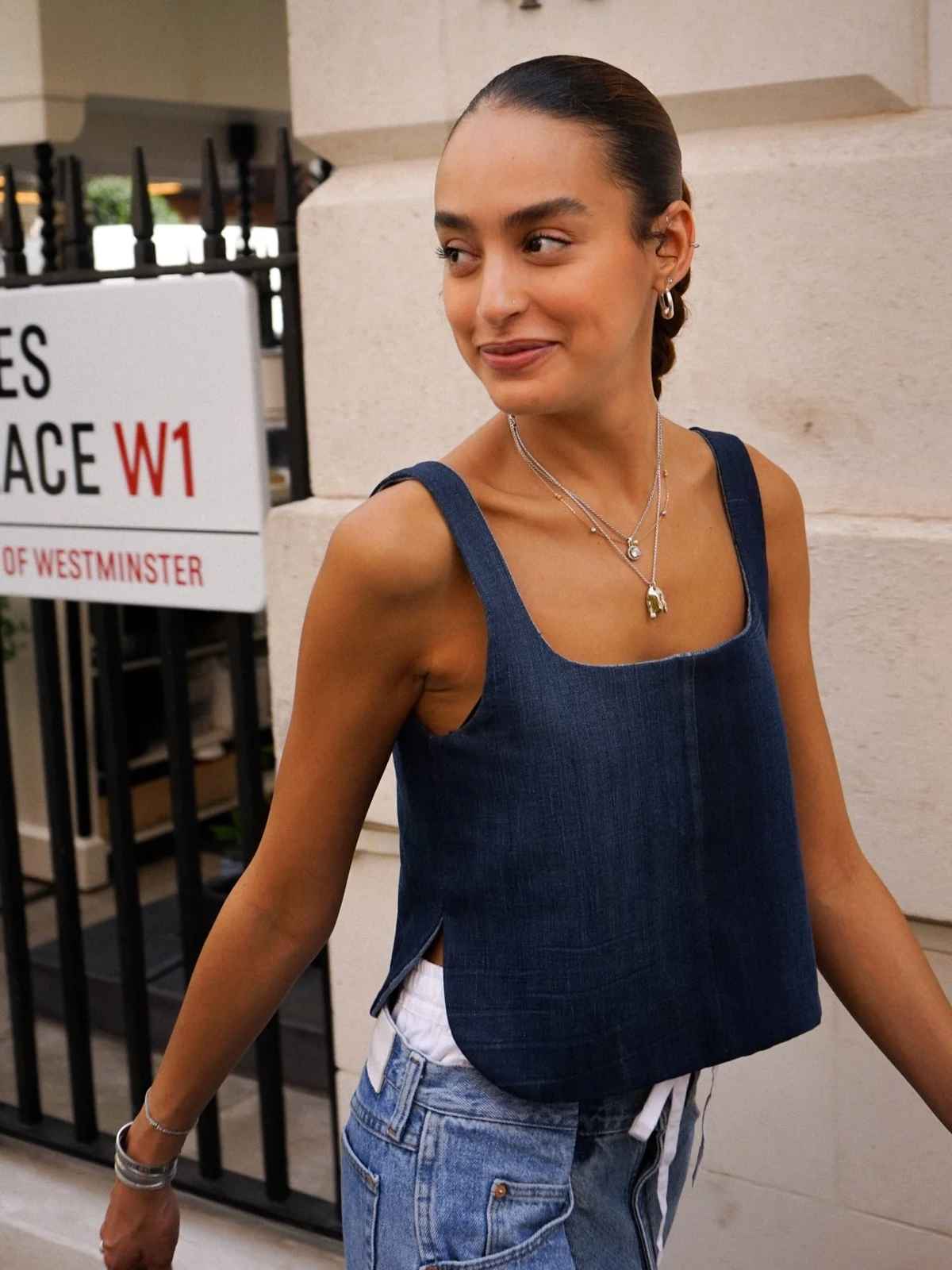Blockchain technology is said to increase the transparency of trading on a large scale. So what is blockchain exactly, what is its potential in the fashion space, and what barriers need to be overcome to ensure a more sustainable implementation?
The age of transparency
At Good On You, we firmly believe in transparency, and we think it’s the first step towards accountability and making the fashion industry more ethical and sustainable.
But how did we come to this current state where we know so little about how our clothes are made? When fast fashion as we know it today started developing around the 1990s, the pressure for retailers to cut down prices for consumers and costs for the brands grew tremendously. Companies relocated their once-local factories abroad in search of lower labour costs and cut corners to cheaply source and produce raw materials—this lead to vast, complex, and opaque supply chains.
But this is the age of the internet, the metaverse, and information. People are demanding more transparency from fashion brands. New technologies and tools—like the Good On You app and directory—are helping people know more about how their clothes were made and which brands are responsible or not.
The technology that has been on everyone’s lips for the past few years is blockchain. You’ve no doubt heard of NFTs or Bitcoin and other cryptocurrencies, but blockchain has many other uses—and its applications within the fashion industry are only starting to be researched.
So today, we give you the lowdown about this mysterious technology.
First things first, what is blockchain technology?
Imagine a Google spreadsheet set on “view only”: it’s digital, it has information on it, it’s shared on different computers, and everyone can access it, but no one can edit it. That’s blockchain.
The digital information is the “block”, and the spreadsheet is the “chain”. When a piece of new information is added, it becomes linked to previous information, part of the chain, and every spreadsheet is updated everywhere. This system is what makes blockchain secure and transparent.
Blockchain is a digital decentralised, distributed, and public ledger. This is a very condensed summary of how blockchain works, but if you’re interested, we recommend this fun video by WIRED.
Now you might be thinking, ‘hold on, how does it help the fashion industry be more transparent?’
Blockchain can be used to record different types of data: from transactions (which are useful for cryptocurrencies) to events (the execution of “smart” contracts, for example) and information, without relying on a middleman or having to interact with other users. That data can be anything: products, materials, suppliers. This means that blockchain can help track any items throughout their lifecycles. When paired with tracking tags, the blockchain can also trace products through the entire supply chain, from the raw material to the factory, the consumer, and beyond. It is an excellent tool for supply chain and inventory management, especially since the blockchain (the record of all the information collected throughout an item’s journey) cannot be modified. This means it can improve traceability and transparency.
Fashion brands have started experimenting with blockchain technology, such as Martine Jarlgaard, who produced a collection with smart labels in 2017 in collaboration with the blockchain company Provenance. When people scanned the tag, they were able to see every step in the production process in detail: time stamps, the location of the factory, and so on. The same year, BabyGhost partnered with VeChain, and Martina Spetlova teamed up with Provenance to offer the same experience to their clients. In December 2018, the agricultural blockchain startup Bext360 partnered with the C&A Foundation, Fashion for Good, and the Organic Cotton Accelerator to experiment with a pilot that uses blockchain to trace organic cotton.
By shining the light on the story of our clothes and bringing more transparency to the fashion supply chain, blockchain can help move away from the fast fashion trend we've sadly fallen into, and bring more love to these beautiful creations that are clothes.
But that’s not all: blockchain can also help designers protect their intellectual property. Because products can be traced, it becomes easy for consumers and retailers to verify their authenticity, reducing the risk of counterfeiting. In 2021, a blockchain consortium called Aura was launched, signing up leading labels such as Prada, Louis Vuitton, and Cartier. The Aura Blockchain Consortium allows consumers to access product history and proof of authenticity of luxury goods—from sourcing to sales, all the way to second hand markets.
Blockchain also improves brand’s storytelling: like Martine Jarlgaard, BabyGhost, and Martina Spetlova did. Brands using blockchain are be able to tell the story of their collections, documenting every step of the design process. As a result, consumers can know (and trust) where their clothes come from, make sure more responsible standards (if there are any) set by the brand are met, and see the real value in the clothes they buy.
Blockchain can also improve the work of organisations like Good On You. Paired with our robust rating methodology, blockchain could allow us to have access to more detailed, precise, and trustworthy information about fashion brands so we can give you better ratings and more beautiful stories about the fashion brands we love and trust.
By shining a light on the darkest parts of the fashion supply chain, blockchain can potentially help change the way fashion is sometimes perceived: as something cheap, manufactured far away, that is worn a handful of times, and thrown away in an unfamiliar place even farther away.
There are still some obstacles
Blockchain is a promising technology which could help improve the authenticity and traceability of products, as well as the transparency of the whole fashion supply chain. But it’s important to remember that blockchain is a relatively new technology. It is still largely unregulated, and no standards or certifications have been set to structure the development of blockchain solutions. The technology is also costly for now, which makes it inaccessible to smaller labels and retailers. Blockchain is also said to consume a lot of energy (it’s said that cryptocurrencies use more electricity than Egypt, which has 102 million people), which could make the whole process not exactly sustainable in the long-run.
Blockchain technology alone cannot solve all the transparency issues in the fashion industry. Other solutions, such as stronger regulations, need to be implemented in conjunction to create a more transparent and responsible industry.
There clearly are some changes to be made, and the adoption of blockchain by fashion industry players is predicted to be slow, but this new technology does have an exciting potential that cannot be ignored.
At Good On You, we look forward to seeing how blockchain develops and discovering innovative ways new technologies can help change the fashion industry for the better.




















